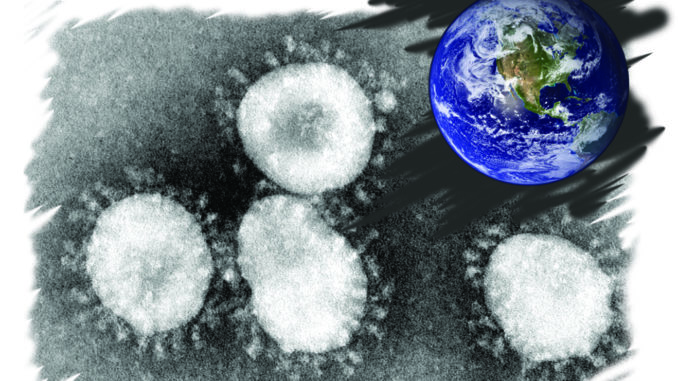
Bio Bites
By R. Gary Raham
A biologist-artist’s ruminations about our roles in a science-inspired world
The recently infamous corona virus, Corvid-19 (a.k.a. 2019-nCoV), humbles our species by spreading quickly and killing about 2 or 3 of every hundred persons it infects. Our social behavior and global distribution serves the virus’ needs well. We are all just a sneeze, touch or cough away from becoming a factory for making billions of new viruses free to carry out their reproductive destinies. Corvid-19 teaches us that its survival tools can often trump our own, no matter our race, gender, or wealth. Its supremacy reigns because it can quickly exploit our planet-wide social connectivity.
All life on our pale-blue-dot of a planet is connected in the same way. I wrote an article called “Plant internets & other botanical wonders” for Colorado Gardener Magazine in 2017. In that piece I discussed how a network of fungal filaments called mycorrhizae connects all the trees in a forest. Fungi and trees don’t just exchange food and water. They also communicate information about pest infestations, environmental toxins, and the general health of the forest community. Certain trees even serve as communication hubs, rather like the Mother Tree in the 2009 movie, Avatar, for you science fiction buffs. But as humans we are rather “plant blind,” as evolutionary ecologist, Monica Gagliano, once described it. We tend to perceive the world only in human terms—a failing that could lead to our specie’s demise, if we are not vigilant.
Chinese officials closed businesses, schools, and public events to check the spread of the corona virus. That action alone has disrupted science, industry, and commerce. It’s even made a measureable impact on the climate—at least in the short term.
Closed universities means access to scientific labs is restricted, resulting in projects that have to be mothballed, fieldwork in various disciplines interrupted, and travel to conferences curtailed. Some research may be postponed months because laboratory test animals can’t be maintained, and some studies will have to be redone. Impacts reverberate around the world for students, academics, and economies that rely on their activities.
Many drug stockpiles for a variety of clinical uses may run out or suffer depletion because 80% of all active pharmaceutical agents are produced in China and India. And what about medical infrastructure? If Corvid-19 (or some future corona virus) were to become a pandemic, could most countries—including our own—treat all of its victims?
The U.S. stock market tumbled over a thousand points recently, concerned about how curtailed economic activities will impact bottom lines. Business abhors uncertainty and chaos.
The shutdown of normal commerce and travel has temporarily reduced the amount of CO2 emissions from China by 25%. Assuming this condition won’t last long, it may only result in a one or two percent reduction over the course of a year, but it’s enlightening to see how quickly the virus can alter our effect on climate-altering emissions.
Perhaps the biggest lesson the Corvid-19 virus can teach us is humility. We may be pretty smart for hairless apes that survived the last ice age, but we still have a lot to learn about our dependence on the health of all the intertwined life on our beautiful blue and white planet—a planet that Apollo 8 astronaut, Jim Lovell, hovering in Lunar orbit, could easily cover with the thumb of his extended hand.
Support Northern Colorado Journalism
Show your support for North Forty News by helping us produce more content. It's a kind and simple gesture that will help us continue to bring more content to you.
BONUS - Donors get a link in their receipt to sign up for our once-per-week instant text messaging alert. Get your e-copy of North Forty News the moment it is released!
Click to Donate
